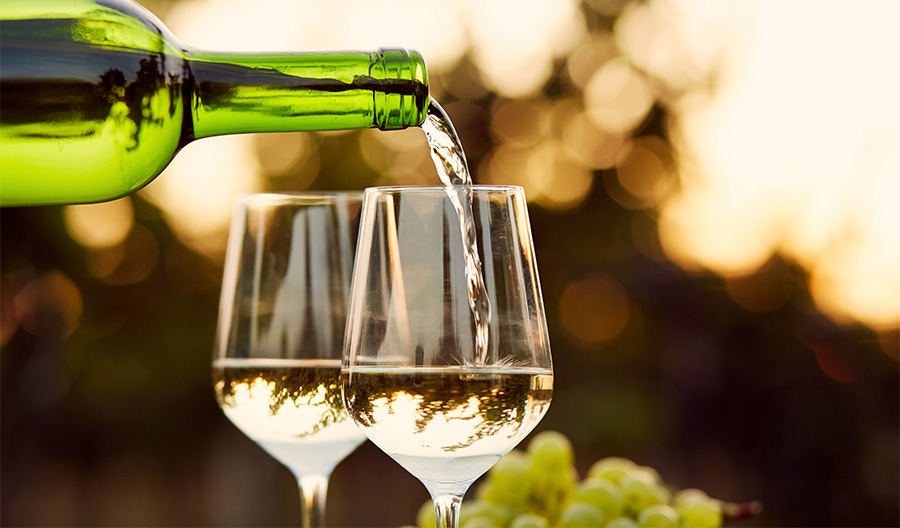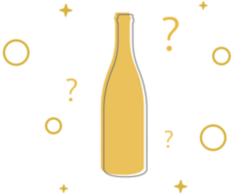Whether Côtes du Rhône or Châteauneuf-du-Pape, Saint-Joseph or Hermitage, the appellations of the Rhône Valley are best known for red wines. Yet there’s a long, illustrious history of white wine production in the region, too.
One of the earliest American champions of Rhône whites was Thomas Jefferson. In the late 18th century, soon after his return from France, he wrote authoritatively about Hermitage to a Philadelphia wine merchant.
“The red is not very highly esteemed, but the White is the first wine in the world without a single exception,” he declared. Unfortunately, “there is so little of the White made that it is difficult to buy it.”
As then, white wines of the Rhône Valley are still marginal in volume, comprising less than 10% of the wines produced regionwide. Scarcity is a large part of why Rhône whites are so little-known outside of France. However, with the recent increasing importance of white wines, the wines continue to increase in quantity and evolve in style as winemakers have become more specialized and equipped for white wine production.
Noble White Wines of the North
With its harsh, continental climate and steep, terraced vineyards, the terroir of the Northern Rhône, as well as the wines produced there, are remarkably distinct from those of the South.
Hermitage, as Jefferson suggested, is the region’s most famous appellation, a majestic granite hill looming over the Rhône River and producing exceptionally age-worthy red and white wines.
Marsanne and Roussanne are the two white grapes permitted for Hermitage blanc, but Hermitage has always been made more with the Marsanne varietal.

White wines of the Rhône are diverse in grape variety and style, but they tend to share a softness of acidity that sets them apart from popular white wines around the world, like those made from Chardonnay, Sauvignon Blanc or Riesling. Marsanne, in particular, produces seductive, opulent wines often described as glycerol, even oily, in texture.
Most white wines are defined by their acidity, but Marsanne plays on a noble bitterness, or tannins, for structure and aging potential. When tasted young, Marsanne can be a bit austere, with notes of green almond rather than exuberant fruit or flora. As it matures, Marsanne gains texture and complexity along with a unique “torrefaction”—deliciously smoky, spicy hints of roasted coffee or cacao beans.
Roussanne, by comparison, is more floral in youth and oxidizes quickly, making it better suited to wines intended for early consumption. Blends of Marsanne and Roussanne are the backbone of the vibrantly fruity, easy-drinking whites of neighboring appellations like Crozes-Hermitage, Saint-Joseph and Saint-Péray.
WHAT DO WE MEAN WHEN WE SAY RHÔNE-STYLE WINE?
With its powerful floral perfume and exuberant peach, apricot and even banana flavors, Viognier has become a popular grape, grown throughout the United States, Australia and beyond. Until the early 1970s, however, Viognier verged on global extinction, dwindling to 34 acres mostly in Condrieu and Château-Grillet, the tiny monopole appellation devoted to Viognier.
The late winemaker Georges Vernay is credited with saving Viognier from annihilation and building the renown Condrieu enjoys today. Much of today’s Viognier plantings around the world can be traced back to cuttings that originate from Domaine Vernay, but Viognier is a different creature entirely when grown outside of Condrieu.
In Condrieu, one doesn't talk about Viognier. Rather, one only talks about Condrieu. The grape variety is just the translator of the very specific terroir in Condrieu—granite soils that give a freshness and minerality, a salinity even, that Viognier itself doesn’t have. While freshness has always been one of Georges Vernay’s trademarks, as more producers began to produce Condrieu, the region has undergone pendulum shifts in style.
Fifteen years ago, the fashion for Condrieu was very fat, rich and high in alcohol. Now, people are focused on freshness, balance and the purity of fruit, easing away from heavy-handed maturation in new-oak barrels and timing harvest times to precisely balance alcohol levels.

